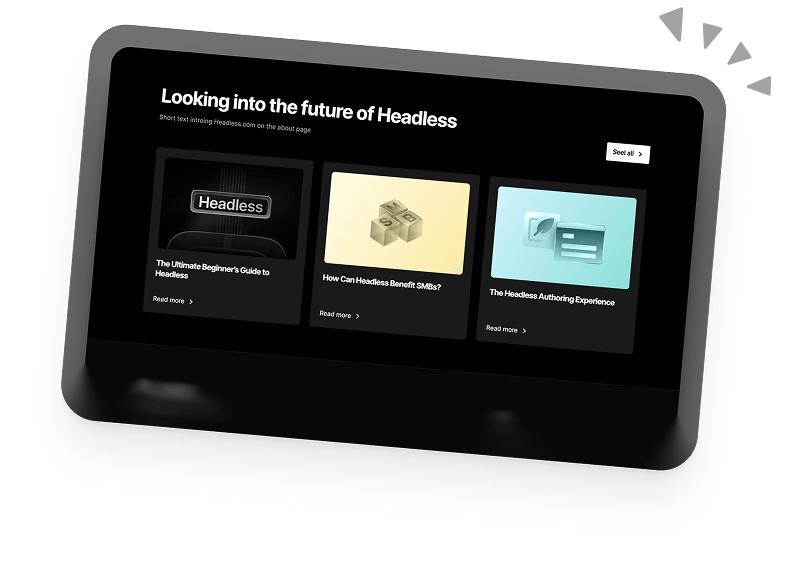SaaS Customer Retention Strategies: The Essential Guide
Let’s face it, landing new customers is great. But keeping them around? That’s pure gold for SaaS companies.
While every new customer helps increase your annual recurring revenue (ARR), the customers who return month after month are the ones that contribute to the true success of your business.
But maintaining an active customer base is easier said than done. To keep your customers happy, your business needs to understand the leading SaaS customer retention strategies and how to actively implement them in your business.
Along with providing examples of customer retention strategies, the goal of this article is to explore the fundamental components of customer retention and take a closer look at “the what, the why, and the how” of keeping clients engaged with your business. With any luck, the information in this article will provide some deeper insights into what makes your customers stick around and equip you with the right tools to enhance your retention rates!
5 Ingredients For Better SaaS Customer Retention
High-value customers frequently return to your business and spend with you. Over time, this translates into a higher customer lifetime value and increased profits.
But, creating a high-value customer doesn’t happen overnight. Your best customers have to love your business, feel satisfied with the services you offer, and enjoy communicating with your team.
While delivering a fantastic product is important, it’s far from the only factor that helps achieve a high SaaS customer retention rate.
There are five pillars to keep in mind when aiming to increase your SaaS customer retention rate:
- Trust – When a customer trusts your business and believes that you have their best interests at heart, they’re more likely to repeatedly partner with your company. From providing a high standard of data security to offering transparent communication, everything feeds into trust.
- Cooperation – Collecting and acting on customer feedback creates a more collaborative relationship.
- Adaptation – Showing flexibility and a willingness to adapt to the specific needs of a client will make them feel valued and greatly strengthen your relationship.
- Knowledge transfer – A company that can show customers how to get the most from its products, share useful technical know-how, and offer insights into the market and current trends will develop a strong bond with its customers.
- Product Quality – At the heart of every business is a great product. Do you deliver a high-quality service that meets all of your customer expectations? With 74% of customers believing product quality is the main factor they look for, you can’t ignore this pillar.
Each of these aspects helps enhance customer sentiment and boost the likelihood that a customer commits to your business.
The 3 Types of Customer Commitment: Why Do Customers Stick With Your SaaS Brand?
Why exactly do customers stick around with a SaaS company? Naturally, it’s not always for the same reason. One person could simply love your product and enjoy using it. Another could keep subscribing because there just isn’t an alternative.
In both of these scenarios, the customer is loyal to a brand. But, one is a positive connection, while the other stems from limitations in the market.
When it comes to customer retention, there are 3 main forms of commitment that keep a customer loyal to a particular brand. While not all of these forms of commitment are equally desirable, they’re all important to understand.
A big part of increasing your retention rate and implementing successful retention strategies is knowing exactly what makes your customers stick around. Once you understand the nature of your customers’ commitment, you’ll gain a much deeper insight into your audience, forming the basis for a strong customer retention strategy.
Once you understand the nature of your customers’ commitment, you’ll gain a much deeper understanding of your audience. This insight will form the foundation of a strong customer retention strategy.
Affective Commitment
Affective commitment is when a customer has a positive sentiment about, and relationship with, a company. This one is pretty straightforward and probably the type of commitment that first comes to mind when we think of customer retention.
Factors that can lead to affective commitment include:
- Enjoying your products
- Alignment of personal values
- Repeated positive interactions with your company
Customers with affective commitment are highly satisfied with your services and unlikely to churn. Obviously this is something that we all want but isn’t always easy to achieve.
To cultivate this type of commitment you need to focus on going above and beyond for your customers.
SaaS brands can foster this powerful type of commitment by enhancing their products over time, providing a cost-effective solution, and impressing their customers with great support.
Calculative Commitment
Calculative commitment is when a customer stays with a company for purely logical reasons.
An obvious example of calculative commitment is a customer sticking with your business simply because you offer the lowest prices.
There are two types of calculative commitment: negative (locked-in commitment) and positive (value-based commitment).
A value-based commitment happens when a customer perceives a tangible benefit from using your services (i.e saving time, saving money, improving KPIs).
A locked-in commitment, on the other hand, is when someone remains a customer because they don’t have any other options. An example of this could be if a SaaS company doesn’t have any direct competitors, meaning a customer doesn’t have any other options.
Alternatively, there may be a heavy fee associated with switching, which is often the case with cloud data services.
While calculative commitment can be an effective component of customer retention, it can also build up resentment over time. The hyperscaler cloud group – Amazon, Microsoft, and Google – are realising this, recently removing the cost of transferring data to their competitors
Normative Commitment
Normative commitment is when a customer stays with a company out of a sense of obligation. Even if they’re not happy with the services, they stay because they feel like it’s the right thing to do.
There are a few different reasons why a customer might feel morally obligated to stay with a company.
- They might feel that it would be ungrateful to leave a company after what the company has done for them.
- Socio-cultural factors in their upbringing, for example if their family placed heavy emphasis on the value of loyalty.
- If they feel that staying with the company is contributing to a worthy cause, for example a company might be involved in charity or community programs.
This type of commitment can also be problematic. If a customer stays on even though they aren’t genuinely satisfied with the service you’re providing, this can cause resentment to build up. In this type of situation, it’s important to focus on providing value to the customer and fostering genuine engagement and satisfaction.
How to Use Intangible Factors in SaaS Customer Retention
Now that we know what makes a customer stay with your business, we can start thinking of ways to influence customer retention. In this section we’ll look at how you can use intangible factors to enhance your customer relationships and, consequently, retention. An intangible factor isn’t directly related to the quality of your product or service but has more to do with the relationship you have with your customers.
There are three intangible factors that are at the core of customer relationships:
- Customer Trust
- Co-operation
- Customer Communication
By focusing on each of these areas, businesses can increase customer satisfaction, which will lead to higher retention rates.
Customer trust
Trust is at the core of all emotional connections. Building up trust with your customers helps generate a positive sentiment over time.
Emotional factors like trust mean customers feel like they have a good connection with your business, making them less likely to churn to a competitor the first time one comes knocking.
Here’s how you can start building trust and opening the door for an emotional connection:
- Be transparent about your social commitments.
- Publish data related to labour and environmental sustainability strategy.
- Meet your commitments and let your customers know you’re on the right path.
- Loop in your customers, gather their feedback, and close the feedback loop.
Focusing on being a more transparent and friendly organisation can improve your relationship with your customers. Openness, willingness to share information, and brand consistency will lay the foundation for a strong customer-business relationship.
Cooperation
Customers want to feel seen and heard. They don’t want to feel like they’re working with some impersonal, unyielding entity. If you show a willingness to cooperate with your customers and accommodate their specific needs, you can create a more personal connection that makes them feel valued.
Here are some ways you can create a more cooperative relationship with your customers:
- Demonstrate that you’re willing to hear what your customers want.
- Show a willingness and enthusiasm to adapt to your customers’ wishes.
- Offer opportunities for customers to cooperate with your business in refinement and development.
This kind of openness and two-way communication will show customers that you care about their specific needs.
Customer Communication
Finally, businesses can reinforce the customer’s positive perception of their brand by streamlining and improving client communication.
Regular communication with your clients helps to enhance both trust and co-operation and is the foundation of a strong and enduring relationship.
Some ways to improve communication are:
- Scheduling regular meetings to check in
- Implementing knowledge transfer where possible
- Using a CRM
- Customer Success Management
Customer Retention Strategies: How to Improve SaaS Customer Retention
As you know, not every SaaS customer is the same. Someone who’s new to your business will have distinct expectations and ideas about your company than a seasoned subscriber.
Knowing how to address SaaS customers at each level of their customer journey will help enhance retention. Luckily, every customer – whether totally new, a devoted fan, or a churned case – has something to teach us about retention.
Here are the leading strategies your business can use to boost SaaS customer retention and learn from your customers.
Lay Strong Foundations
The first impression you give your customers sets the tone for how your entire relationship will pan out. If you give the wrong idea, set unachievable expectations, or make unrealistic promises, you’ll set yourself up for failure.
One of the most important strategies for improving SaaS customer retention is to lay strong and stable foundations for your business relationship. Here’s how you can set the right tone with your customers from day one:
- Set Clear Expectations: The promises and expectations you set at the beginning of your relationship will define satisfaction levels over the entire relationship. Be realistic, don’t overpromise anything, and be transparent about your platform, what it does, and what it doesn’t do.
- Contextualising Your Value Proposition: You likely know better than anybody that there are other SaaS tools on the market that serve a similar purpose. By singling out what makes your company different and selling customers on your USP, you’ll hit the ground running.
- Personalise Your Onboarding Experience: A poor onboarding experience is the leading contributor to customer churn. Implementing a little personalisation (and even some gamification) into your onboarding process will add that extra bit of spice that keeps clients engaged and makes for a strong first impression.
Drive Engagement During the Customer Journey
At the midway point in the customer journey, your clients already know what you offer, what your SaaS product does, and what benefits you deliver to their company.
This stage of the SaaS customer journey is all about streamlining interactions and communication.
It’s at this stage that you go above and beyond to show customers why they should stay with your business. Here’s how to keep SaaS retention rates high for customers who already know your company:
- Collect and Implement Customer Feedback – Your customers know your systems better than anyone. Collecting and implementing their feedback will improve your SaaS product while showing your customers that their comments are important to you. This retention strategy kills two birds with one stone and wins customers for life.
- Offer a Rewards Program – Members of brand loyalty programs are 60% more likely to spend on a brand. Creating a value-packed loyalty program will keep your SaaS customers coming back for more.
- Go the Extra Mile in Customer Service – Every customer support interaction is a chance to impress your customers. Support chats also provide a great opportunity to personalise your conversations. Use a CRM service to keep tabs on your customers, centralise their data, and make sure your customer support agents have all the tools they need to wow your customers.
Source. – Results of Paid Loyalty Programs
Wherever you can, go the extra mile. Acquiring a new customer costs five times as much as retaining a current one—don’t lose the precious customers you already have!
Leverage Customer Churn
Even customers who are on their way out can help contribute to better customer retention in the future. While it sounds strange, your churning customers can become a vital resource in your retention plan.
By sending out surveys or hosting exit interviews with willing churning customers, you can collect feedback on why they’ve decided to leave.
Insights from churning customers can reveal the leading reasons that your business is struggling with customer retention. By collecting this feedback, implementing it, and iterating your services in response, you can achieve higher SaaS retention rates.
And, reaching back out to churned customers after implementing their feedback may even win you some return customers. This retention strategy is a total win-win.
Wrapping Up
Customer retention is the lifeblood of SaaS companies. With the information and strategies from this article, you’ll be well equipped to boost your retention rate and keep your audience happy.
Book a 30-min Introduction Call
Let's jump on a quick intro call We'll break down your project, and pinpoint exactly how we can help.



Our clients  Holaa! love working with us see their stories below!
Holaa! love working with us see their stories below!






